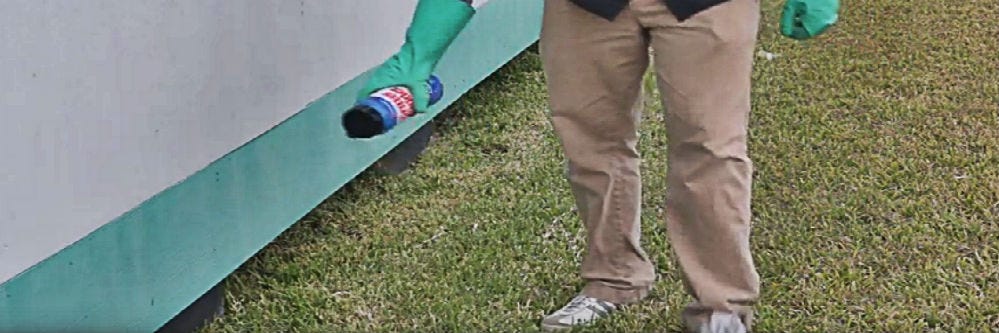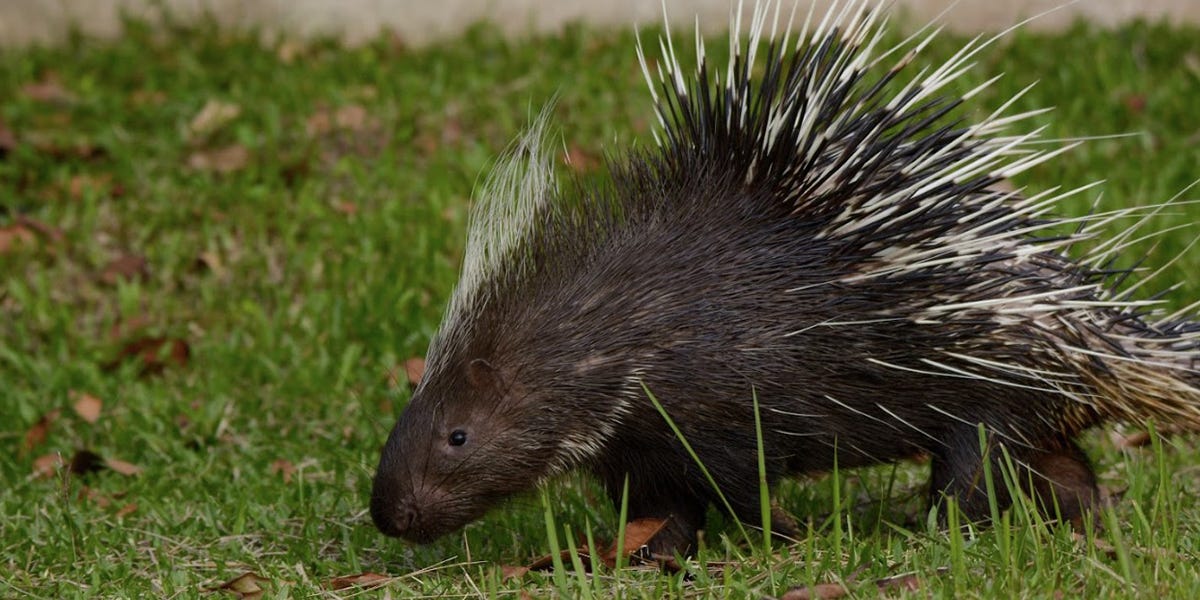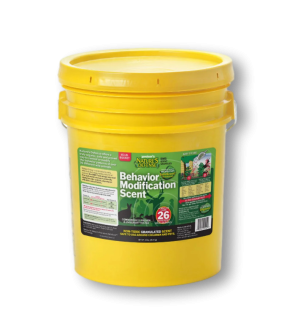Gain access to personalized product screening, the best pricing, rewards, and more!
Most Effective Products
Porcupine Control: How To Get Rid of Porcupines
This page is a general porcupine control guide. Using the products and methods suggested, you will get control of the porcupine. Follow this guide and use the recommended products, and we guarantee 100% control over porcupines. Consult your local and state guidelines to see if porcupines are a protected species in your location before applying control, and proceed with caution when applying control as porcupines can be dangerous.
Porcupines are an uncommon intruder to witness in your yard, but just one of these animals is enough to make homeowners concerned. Porcupines are usually content residing in the woods, but if they start to wander out and venture where humans dwell, it usually is because of some factor in the woods that is pushing them out. This could usually be either a drought, food shortage or other conditions that put porcupines in a compromising position.
Porcupines are the third-largest member of the rodent family. These mammals typically live in other parts of the world, such as Asia, Europe, and Africa. However, despite this fact, the largest porcupine populations live in the western United States and Canada. They can be found in forests, grasslands, meadows, and occasionally desert areas. Porcupines are resilient and adaptable animals that can tolerate a variety of climates due to their exceptional defense mechanisms and versatile eating habits.
Porcupines that trespass into residential or commercial areas are known to create a lot of trouble and inflict significant property damage. Most notably, porcupines like to destroy trees by eating bark and branches. Gardens or vegetation are also at risk of being destroyed. Since homes are made of wood, they can also be susceptible to wood damage. Their appearance can also attract predators like mountain lions and bears.
If you have encountered a porcupine on your property, this DIY guide can help. Learn more about porcupines and how to eliminate an invader from your yard using our expert advice and professional-grade products.
Identification

Before completing a treatment plan, you must ensure you are dealing with porcupines and not some other animal. Misidentification may lead to using the wrong treatment products, which could waste time and money. Here are some identifying traits so you know what porcupines look like for proper identification:
- Porcupines can be easily identified by the thick layer of brown/black fur and thousands of long spiky quills (or spines) all over their body.
- The quills are very sharp and needle-like, and they have barbs on them, which make it difficult to pull out once pricked. As if that wasn’t enough, they have an oily substance on them that can cause burning and itching, as well as disease. It’s safe to say that it would be wise not to touch them.
- Porcupines can grow to about a foot long and can walk on their four paws. They are slow-moving animals with long, powerful teeth that they use to eat wood.
Use the image and description above to properly identify a porcupine on your property. If you are unsure, contact us, and we will help you identify the problem.
Inspection

You should conduct an inspection once you have identified the animal you are encountering as a porcupine. You will need to survey the area to see where they are active and what may be attracting them.
Where To Inspect
Search in your yard, near your beneficial trees, gardens, crops, fields, and lawn. Porcupines have a high preference for the following tree species: aspen, cottonwood, willow, and ponderosa pines.
What To Look For
You’re looking for a porcupine activity. This means looking for twigs that have been eaten, their tracks (especially during the winter when they are active), and barkless trees stripped by their gnawing. Tracks will look like small shoe tracks (like a sole, with a heel portion and front portion) and will also show a drag marking of their tail between the paws. Once you have confirmed porcupine activity, this is where you will apply treatment.
Treatment
Once you have confirmed porcupine activity, it is time to begin treatment. Remember to read all product labels and follow the application instructions on these labels. Stay safe by wearing personal protective equipment.
Since harming a porcupine is discouraged, controlling an invading porcupine will involve either live trapping with Solutions Humane Live Trap or deterring the rodent from your property with a repellent such as Critter Ridder. We recommend the Solutions Live Trap as the best form of control, but Critter Ridder results may vary, so it is not a guarantee that this will keep porcupines away.
Step 1: Set up the Solutions Humane Live Animal Trap

The Solutions Humane Live Animal Trap is easy to use and place. To use, bait the trap with something to attract the porcupine, place it in a strategic area where they have been active, and then set the trap by pushing on the door lock and lifting the door plate, then pulling the trigger arm forward until the trigger arm's hook catches the door.
We suggest using a piece of wood (preferably a branch from willow, cottonwood, or aspen) or a piece of cloth soaked in a water-salt solution for porcupines. Using both these baits will bring better results. Place the trap where damage has occurred or, if you have identified it, at their den entrances. Wait for some time and monitor the trap for the next few days.
If the porcupine is caught, relocate it at least 25 miles away from your property or call animal control.
Step 2: Apply Critter Ridder

Critter Ridder is an organic repellent that works for several animals, including porcupines. Each 1.25 lb. will protect approximately 50 sq. ft. You can use repellent alongside a live trap or as an alternative to trapping.
Using gloves, lightly sprinkle granules directly from the container or using a spreader at a rate of 1 lb. per 40 sq. ft.
It can be applied to lawns, garden paths, and flowerbeds. To treat specific sites such as garbage bags, ornamental plants, trees, or shrubs, spot-treat ground around the area to be protected, or if possible, apply granules to the ground as a border around the entire area to be protected.
Apply the Critter Ridder repellent where you have noticed porcupine damage, especially around damaged wooden structures, trees, and areas where porcupine activity has been most prevalent. Make sure to apply it twice weekly for two weeks.
Prevention
Once the Porcupine threat has been neutralized, you will want to ensure an invasion doesn't happen again. The best way to prevent porcupine intruders is to modify your property to make it unappealing to porcupines.
- Start by building a fence around trees, gardens, and areas where damage has been most prevalent. Although porcupines might be able to climb fences, a wire strip installed at a 65-degree angle at the top of the fence will make it harder for them to climb over.
- Electric fences are the most effective form of prevention. They should be placed 1 1/2 inches above an 18-inch fine mesh wiring fence. Trees can be protected by wrapping around trunks with 30-inch high wire fences, which will reduce their feeding damage.
Key Takeaways
What are Porcupines?
- Porcupines are large rodents that can be dangerous to encounter due to their painful and often disease-causing quills on their body.
How to Get Rid of Porcupines
- We recommend combining the Solutions Humane Live Trap and Nature's Defense repellent to control porcupine invaders.
Preventing Porcupine Reinvasion
- Habitat modifications, such as building or installing electrical fences, will be needed to prevent porcupine invasions.









